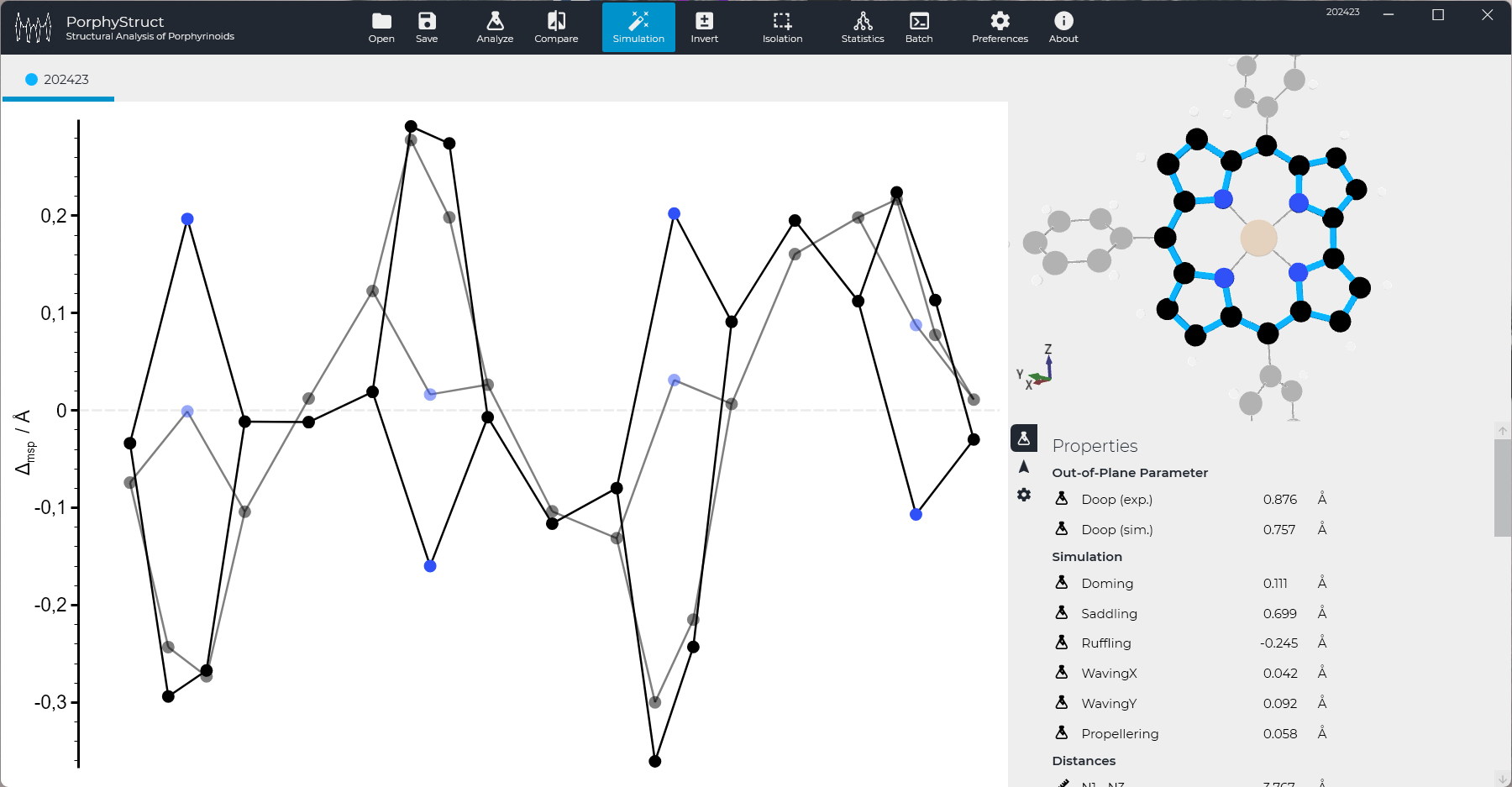Minimal and Extended Basis
Introduction
Section titled “Introduction”Once in a while there will be an structure with a high

Minimal Basis
Section titled “Minimal Basis”The minimal basis only contains the 6 lowest energy (frequency) vibrational normal modes of the reference structure for simulation (Simulation process is described here, Modes are visualized here). Often this gives a very good fit - especially for symmetric molecules. The minimal basis contains one structure for each characteristic mode: Doming, Saddling, Ruffling, Waving X & Y and Propellering.
Extended Basis
Section titled “Extended Basis”The extended basis adds another set of reference structures to the simulation. 12 (11 for Porphyrin and Norcorrole) modes are used to simulate the experimental structure. Using the extended basis the error is often negligible. This is also the case for the choosen copper complex. The deviation is 0.001 Å and the simulated structure fits perfectly. The image shows the reason for the bad results with the minimal basis: A huge amount of Saddling2 is present in the structure (Simulation process is described here, Modes are visualized here).

Which one to pick?
Section titled “Which one to pick?”If possible choose the minimal basis. This is a good choice in most cases and is easier to describe. If the Doop-Values differ to much, like about 3-5% of the Doop (exp.) Value one should use the extended basis. If you are not sure look at the simulation graph. If it gets significantly better, use the extended basis, if it’s already fine, stick with the minimal basis.